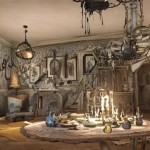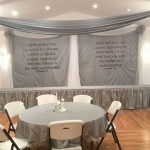```html
How to Decorate a Large Bedroom
Decorating a large bedroom presents a unique set of opportunities and challenges. The sheer scale of the space allows for creativity and the incorporation of multiple functional zones, but it can also lead to a room that feels cavernous and impersonal if not properly planned. The key to successfully decorating a large bedroom lies in strategic planning, careful furniture selection, creative use of color and texture, and thoughtful consideration of lighting.
Establish Functional Zones
One of the most effective strategies for decorating a large bedroom is to divide the space into distinct functional zones. This not only makes the room more visually appealing but also enhances its usability. Consider the various activities that will take place in the bedroom and allocate specific areas for each. Some common zones include a sleeping area, a dressing area, a reading nook, a workspace, and even a small seating area for relaxation.
The sleeping area should be the focal point of the room, housing the bed as the primary piece of furniture. The bed frame should be appropriately sized for the room; a small bed can get lost in a large space. Consider a king-size bed or a California king, depending on personal preference and floor plan. The bedding should be high-quality and visually appealing, incorporating layers of texture and color to create a sense of comfort and luxury. A large headboard can further anchor the sleeping area and add a touch of elegance.
A dressing area can be created by incorporating a large wardrobe or closet system. If space allows, consider creating a walk-in closet. Alternatively, a freestanding wardrobe or an armoire can serve as a stylish and functional alternative. A dressing table with a mirror and adequate lighting is also a valuable addition to this zone. A comfortable chair or ottoman provides a place to sit while getting dressed or putting on shoes.
A reading nook can be a cozy and inviting space for relaxation and leisure. A comfortable armchair or chaise lounge is essential, along with a side table for holding books, drinks, and other essentials. A floor lamp or table lamp will provide adequate lighting for reading. Add a soft rug and some throw pillows to create a sense of comfort and warmth. Consider placing the reading nook near a window to take advantage of natural light.
A workspace can be incorporated into a large bedroom for individuals who work from home or need a dedicated area for studying. A desk and ergonomic chair are essential, along with adequate storage for office supplies. Ensure that the workspace is well-lit and free from distractions. Consider using screens or dividers to create a sense of separation between the workspace and the sleeping area. A bookshelf or filing cabinet can provide additional storage and organization.
A small seating area can be created for relaxation and conversation. A loveseat or a pair of armchairs can be arranged around a coffee table. Add some throw pillows and a soft rug to create a comfortable and inviting space. A side table can be used to hold drinks or snacks. Consider placing the seating area near a window to take advantage of natural light. This zone is particularly useful if the bedroom is also used as a guest room.
Scale and Proportion in Furniture Selection
The scale and proportion of furniture are crucial considerations when decorating a large bedroom. Furniture that is too small will get lost in the space and make the room feel empty and unfinished. Conversely, furniture that is too large can overwhelm the room and make it feel cramped and uncomfortable. It is important to select furniture that is appropriately sized for the room and that is in proportion to other elements in the space.
When selecting a bed, consider the overall size of the room and the height of the ceiling. A king-size bed is often a good choice for a large bedroom, but a California king may be more suitable if the room is long and narrow. A headboard can add height and visual interest to the bed. The height of the headboard should be in proportion to the size of the bed and the height of the ceiling. Tall headboards can make the ceiling appear lower, while short headboards can get lost in a large space.
When selecting seating, consider the overall size of the seating area and the number of people who will be using it. A loveseat or a pair of armchairs can be a good choice for a small seating area, while a sectional sofa may be more suitable for a larger space. The size and shape of the coffee table should be in proportion to the seating. A large coffee table can overwhelm a small seating area, while a small coffee table can get lost in a large space.
When selecting storage, consider the amount of storage space that is needed and the overall size of the room. A large wardrobe or closet system can provide ample storage space, but it can also take up a significant amount of floor space. A freestanding wardrobe or an armoire can be a more space-efficient alternative. Shelves and drawers should be appropriately sized for the items that will be stored in them. Tall shelves can make the ceiling appear lower, while short shelves can get lost in a large space.
When selecting accessories, consider the overall size of the room and the scale of the furniture. Large-scale artwork and decorative objects can make a statement and add visual interest to the room. Smaller accessories can get lost in a large space, so it is important to group them together to create a cohesive display. The colors and textures of the accessories should complement the overall color scheme of the room.
Color, Texture, and Lighting Strategies
Color, texture, and lighting are essential elements in creating a visually appealing and comfortable bedroom. The use of color can influence the mood and atmosphere of the room. Light colors can make a room feel larger and brighter, while dark colors can create a sense of intimacy and warmth. Texture can add depth and interest to the room, and lighting can be used to highlight architectural features and create a desired ambiance.
When selecting a color palette, consider the overall style of the room and the desired mood. Neutral colors, such as white, beige, and gray, are versatile and can be paired with a variety of accent colors. Cool colors, such as blue, green, and purple, can create a sense of calm and relaxation. Warm colors, such as red, orange, and yellow, can create a sense of energy and excitement. It is important to choose colors that are personally appealing and that complement the room's natural light.
Texture can be added to the room through the use of different materials and finishes. Soft fabrics, such as velvet, silk, and linen, can create a sense of luxury and comfort. Rough textures, such as brick, stone, and wood, can add visual interest and depth to the room. Metallic accents, such as gold, silver, and bronze, can add a touch of glamour. Layering different textures can create a more dynamic and interesting space.
Lighting is a crucial element in creating a functional and comfortable bedroom. Natural light should be maximized whenever possible. Windows should be kept clean and unobstructed. Sheer curtains or blinds can be used to filter harsh sunlight and provide privacy. Artificial lighting should be layered to provide adequate illumination for different activities. Ambient lighting, such as overhead lighting or recessed lighting, provides general illumination. Task lighting, such as table lamps or floor lamps, provides focused light for reading or working. Accent lighting, such as spotlights or wall sconces, can be used to highlight architectural features or artwork.
Consider incorporating dimmers into the lighting system to control the intensity of the light. This allows for adjusting the lighting to suit different moods and activities. Warm-toned light bulbs are generally more relaxing than cool-toned light bulbs. Strategically placed mirrors can reflect light and make the room feel larger and brighter. Chandeliers or pendant lights can add a touch of elegance and drama to the room.
By carefully considering these factors, it is possible to create a large bedroom that is both functional and stylish. The key is to plan strategically, select furniture that is appropriately sized and proportioned, and use color, texture, and lighting to create a comfortable and inviting space.
```
31 Helpful Decor Ideas For Large Master Bedrooms

How To Decorate A Large Bedroom Furniture

How To Decorate Your Master Bedroom On A Budget

31 Helpful Decor Ideas For Large Master Bedrooms

Bedroom Ideas How To Decorate A Large Architectural Digest

Cozy Master Bedroom Design Ideas Abby Organizes

Decorating A Large Master Bedroom Inspirational Traditional Designs Ideas Us The Glam Pad

How To Decorate A Master Bedroom Creating Peaceful Oasis

Decorating A Large Master Bedroom How To Decorate

10 Best Master Bedroom Ideas For Your Home In 2025 Oppein
Related Posts







